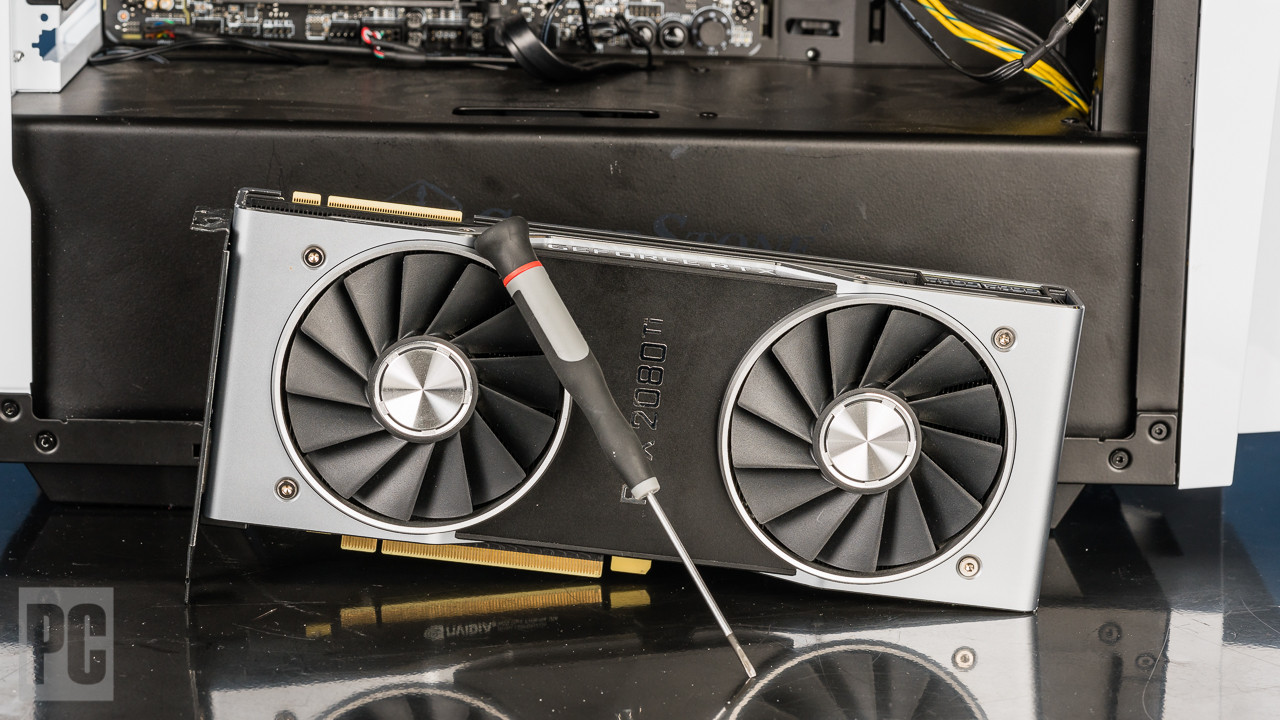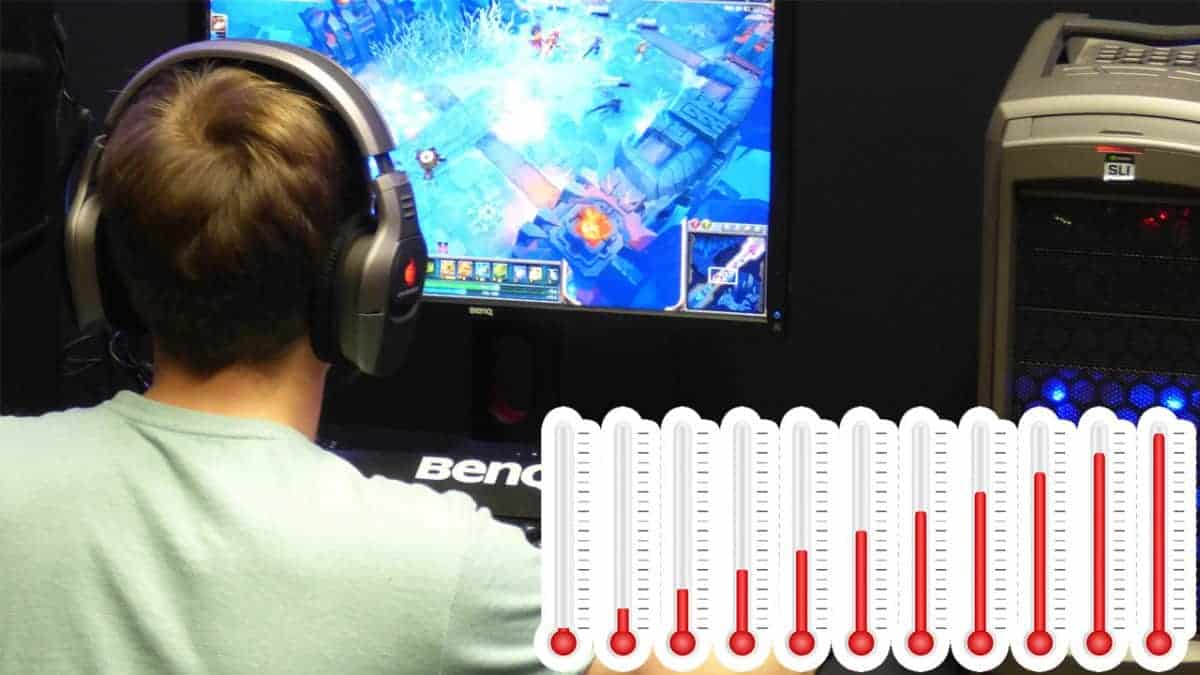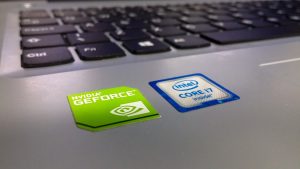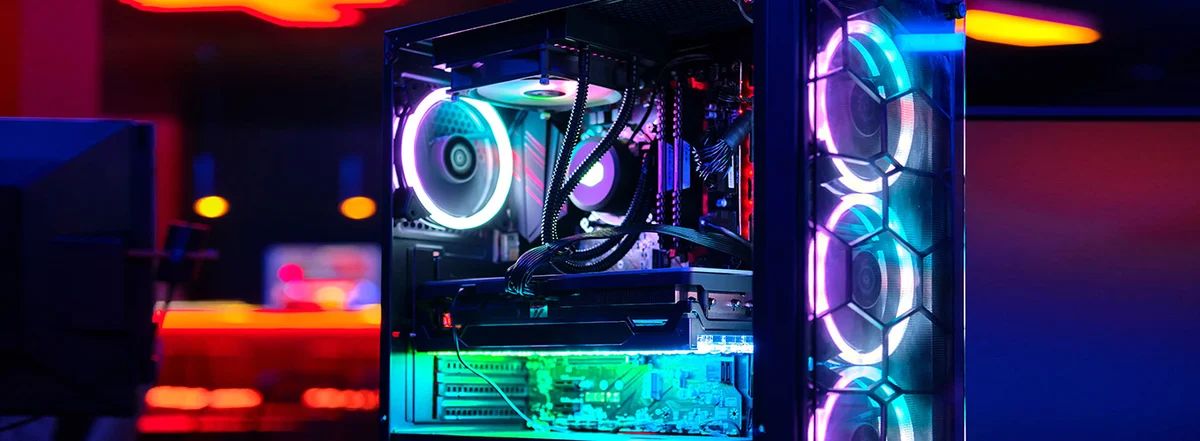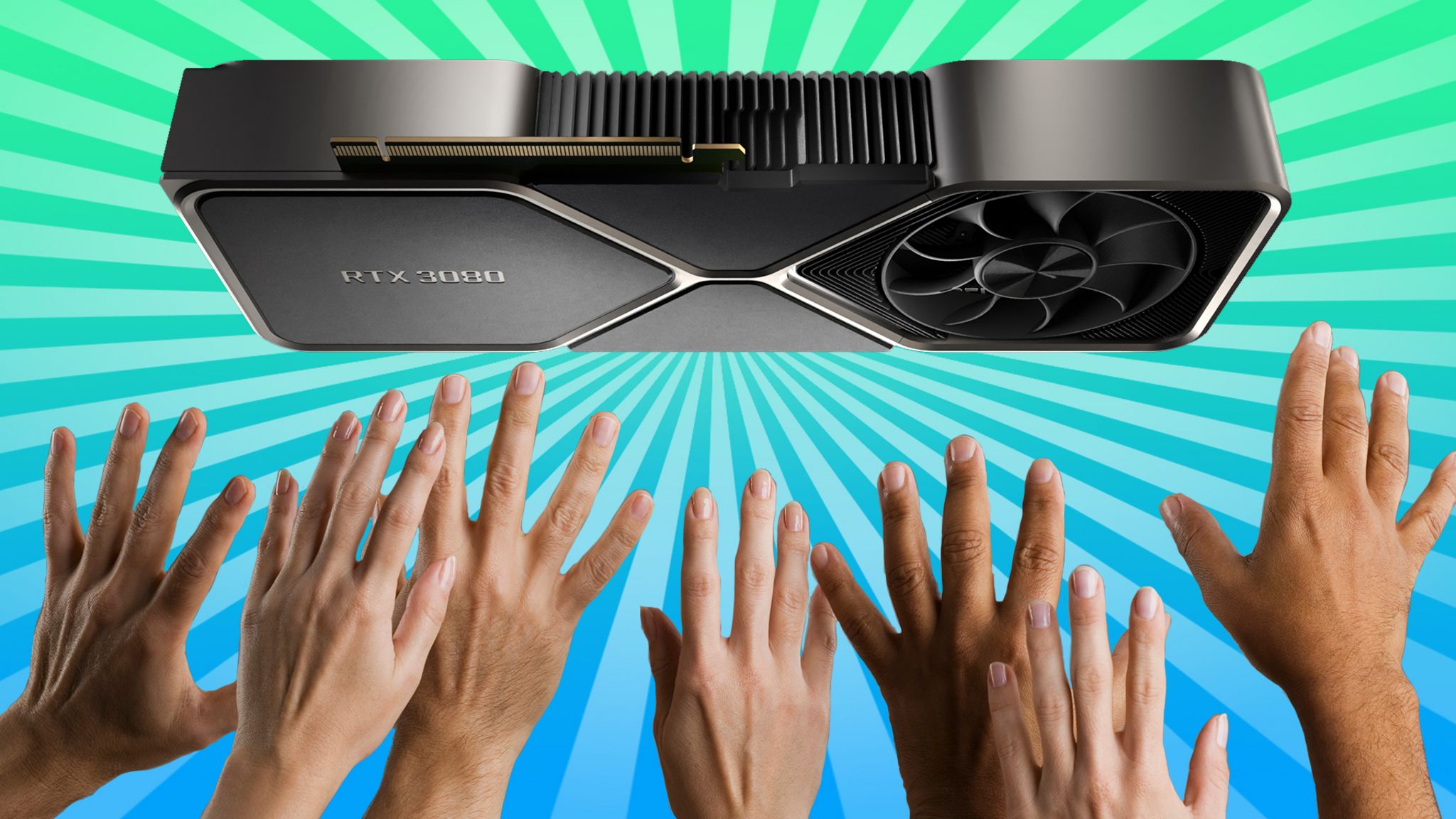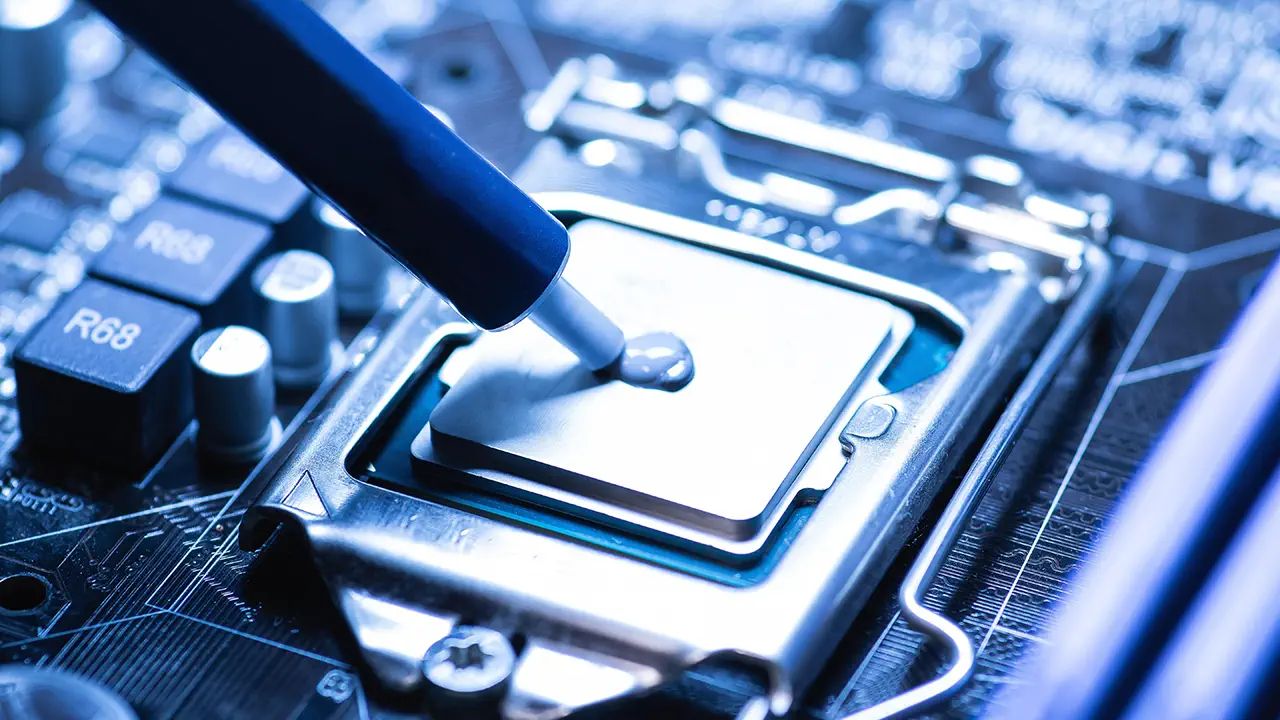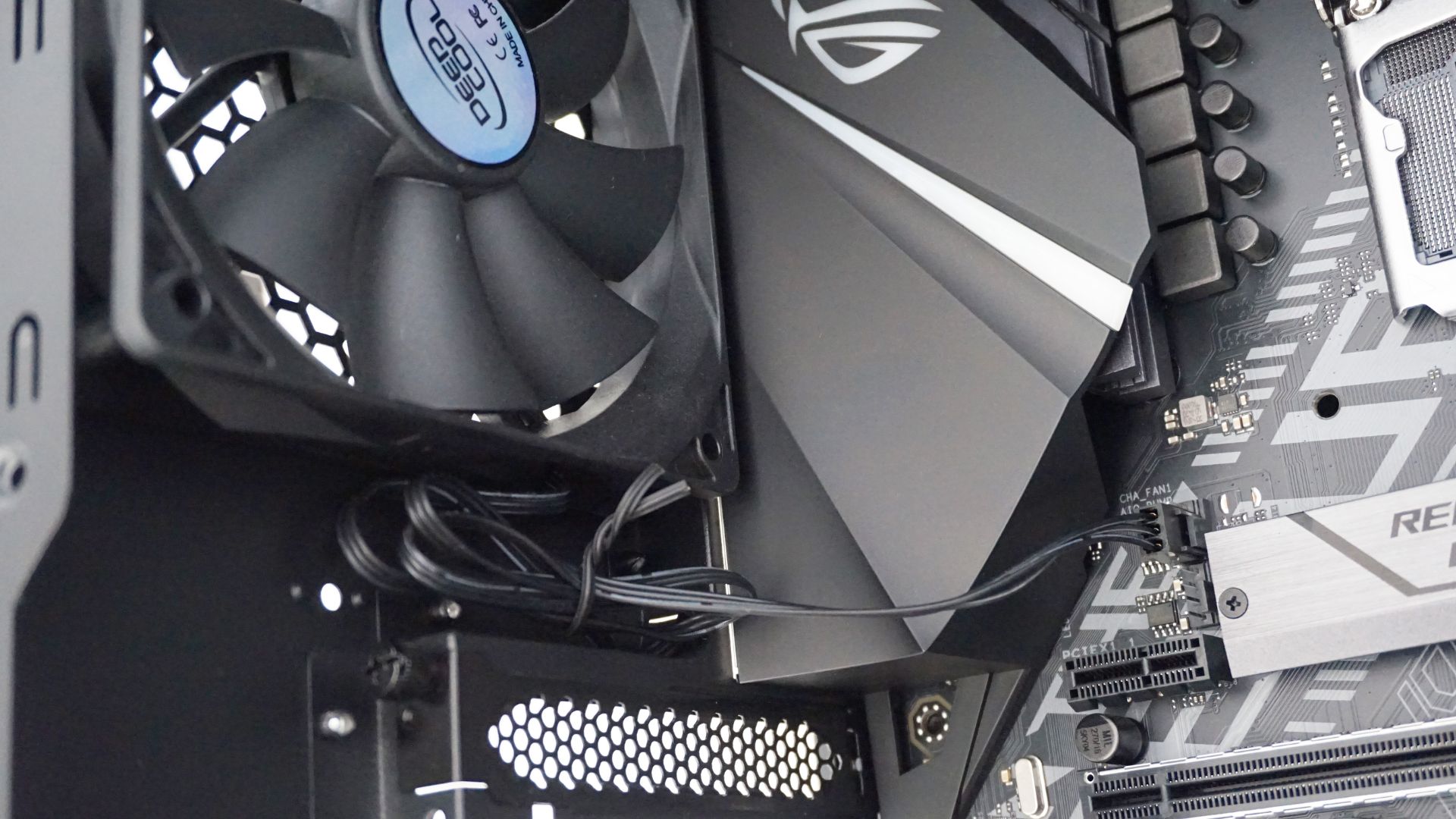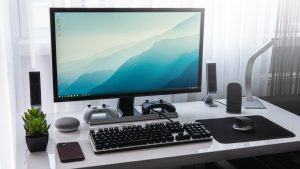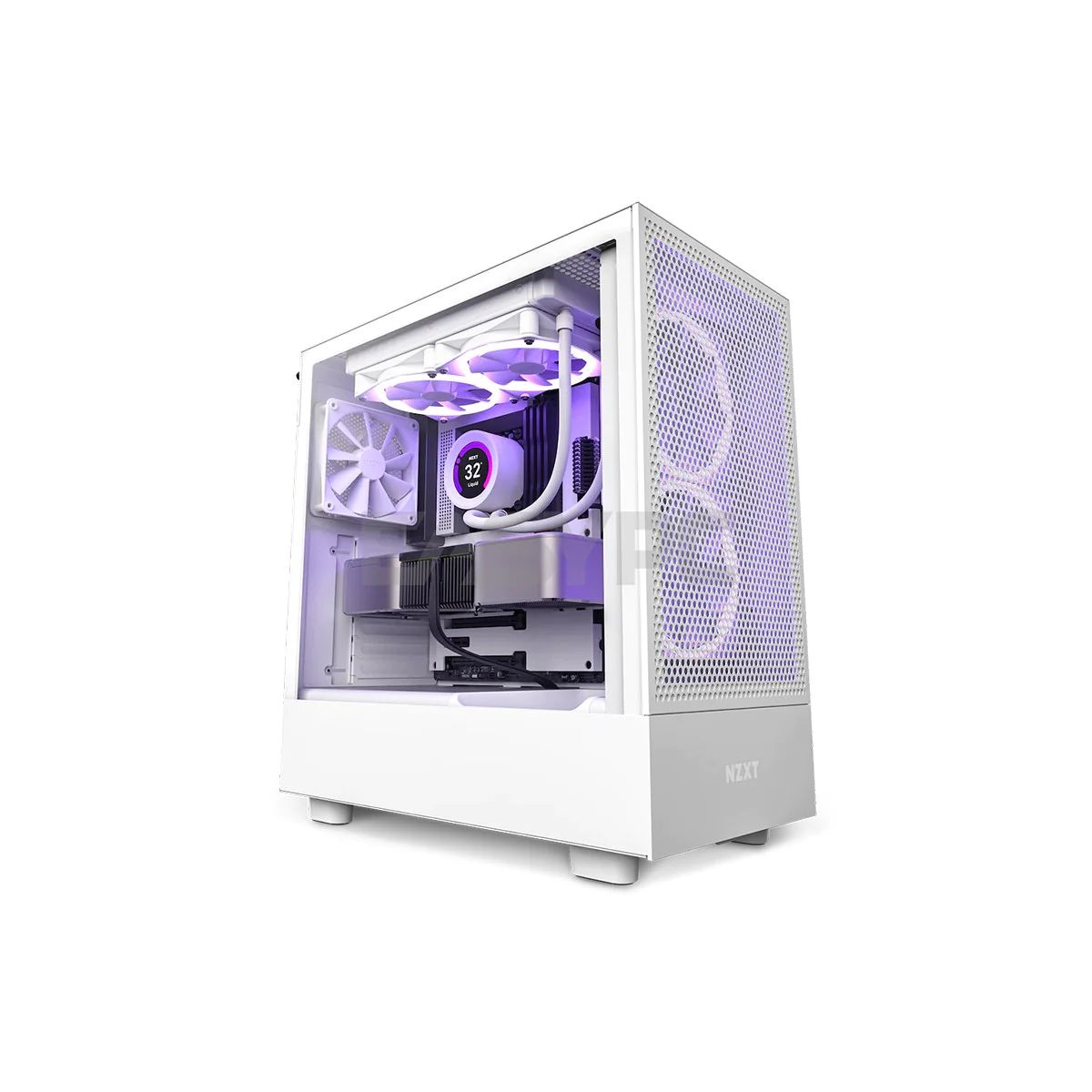Introduction
Have you ever wondered why your PC is not utilizing its GPU (Graphics Processing Unit) properly? Your GPU plays a crucial role in handling graphics-intensive tasks, such as gaming, video rendering, and 3D modeling. However, there can be various reasons why your PC might not be utilizing your GPU to its full potential.
Your GPU is designed to offload the graphics processing tasks from your CPU, enhancing overall performance and delivering a smoother experience. If your PC is not using your GPU properly, you might experience lag, low frame rates, and other performance issues.
Identifying the reasons why your PC is not utilizing your GPU can be a daunting task. It can be caused by software or hardware issues, driver conflicts, power settings, or even improper GPU connection.
In this article, we will explore the common reasons why your PC might not be utilizing your GPU and provide troubleshooting steps to resolve the issue. By the end of this article, you will have a better understanding of how to ensure that your PC is using your GPU to its fullest potential.
Reasons why your PC might not be using your GPU
There can be several reasons why your PC is not utilizing your GPU as expected. Understanding these reasons is the first step in troubleshooting the issue. Here are some common factors to consider:
- Driver issues: Outdated or incompatible GPU drivers can prevent your PC from properly utilizing your GPU. It is essential to keep your GPU drivers up-to-date to ensure optimal performance.
- Power settings: Your power settings can influence how your PC uses the GPU. If your PC is set to use power-saving settings, it may not fully utilize the GPU’s capabilities. Make sure your power settings are configured for maximum performance.
- Incorrect BIOS/UEFI settings: Incorrect settings in the BIOS or UEFI firmware of your PC can cause the GPU to underperform or not be recognized at all. Checking and adjusting these settings can help resolve the issue.
- Hardware conflicts: Conflicts between hardware components can lead to your GPU not being utilized properly. This can occur with incompatible devices or faulty connections. Resolving any hardware conflicts can help optimize GPU usage.
- Insufficient power supply: If your power supply unit (PSU) does not provide enough power to the GPU, it may not be able to function at its full potential. Upgrading to a higher wattage PSU can ensure sufficient power for your GPU.
- Software limitations: Some software applications may have limitations on GPU usage, or they may not be optimized to utilize the GPU efficiently. Updating or reinstalling the software can help overcome these limitations.
- GPU not properly connected: Improper installation or loose connections can prevent the PC from detecting and utilizing the GPU correctly. Checking the physical connections can help resolve this issue.
These are just a few potential reasons why your PC may not be using your GPU as expected. Now that we have discussed the possible reasons, let’s move on to the troubleshooting steps that can help resolve this issue.
Driver issues
Outdated or incompatible GPU drivers can be one of the main causes of your PC not utilizing your GPU properly. Drivers act as the bridge between your operating system and the GPU, allowing them to communicate effectively. When the GPU drivers are outdated or incompatible, it can lead to performance issues or even the GPU not being recognized by the system.
To resolve driver issues, follow these steps:
- Identify your GPU model: Knowing the exact model of your GPU is essential for finding the correct drivers. You can usually find this information through the graphics card itself or by checking your PC’s specifications.
- Visit the manufacturer’s website: Go to the official website of your GPU manufacturer, such as NVIDIA or AMD. Look for the “Support” or “Drivers” section.
- Download the latest driver: Find the driver download page and search for the appropriate driver for your GPU model and operating system. Make sure to download the latest version.
- Uninstall the old drivers: Before installing the new drivers, it is recommended to uninstall the existing drivers from your system. You can do this by going to the “Device Manager,” locating your GPU under the “Display adapters” category, right-clicking on it, and selecting “Uninstall.”
- Install the new drivers: After uninstalling the old drivers, run the downloaded driver installer and follow the on-screen instructions to install the new drivers onto your system.
- Restart your PC: Once the installation is complete, restart your PC to ensure that the changes take effect.
- Verify GPU utilization: After restarting, check if your PC is now utilizing your GPU properly. You can use performance monitoring software or run GPU-intensive tasks to test its performance.
Updating your GPU drivers can often resolve issues related to hardware acceleration and ensure that your PC is utilizing the GPU effectively. By following these steps, you can keep your drivers up-to-date and enhance the overall performance of your GPU.
Power settings
The power settings of your PC can significantly impact how your GPU is utilized. If your power settings are configured for energy-saving mode, it may prevent your GPU from operating at its full potential. Adjusting the power settings can help ensure that your PC is utilizing the GPU properly.
Here are the steps to check and adjust your power settings:
- Open the Control Panel: Press the Windows key + R, type “control panel” in the Run dialog box, and press Enter.
- Select the Power Options: In the Control Panel, navigate to the “Hardware and Sound” section and click on “Power Options.”
- Choose a power plan: You will see different power plans listed, such as Balanced, Power Saver, and High Performance. Select the “High Performance” power plan to ensure that your PC is utilizing the GPU to its fullest potential.
- Modify advanced power settings: To further optimize the power settings, click on “Change plan settings” next to the selected power plan. Then, click on “Change advanced power settings.”
- Adjust GPU power management settings: In the advanced power settings window, locate the “PCI Express” or “Graphics settings” option. Expand it and find the “Power management mode” or similar setting. Set it to “Maximum performance” or “Adaptive,” depending on your preference.
- Save and apply the changes: Once you have made the adjustments, click on “Apply” and “OK” to save the changes. It may require a system restart to apply the new power settings.
- Verify GPU utilization: After restarting, observe if your PC is now utilizing your GPU properly. You can monitor the GPU usage through utilities like task manager or third-party performance monitoring tools.
By modifying the power settings and choosing the appropriate power plan for maximum performance, you can ensure that your PC is utilizing your GPU effectively. Adjusting the power settings can help eliminate any restrictions that may be limiting the GPU’s performance.
Incorrect BIOS/UEFI settings
Incorrect settings in the BIOS (Basic Input/Output System) or UEFI (Unified Extensible Firmware Interface) of your PC can prevent your GPU from being utilized properly. It is crucial to check and adjust these settings to ensure optimal GPU performance.
Follow these steps to verify and modify the BIOS/UEFI settings:
- Restart your PC: Start by restarting your computer and repeatedly pressing the designated key to access the BIOS or UEFI settings. Common keys include F2, Del, or Esc, but it may vary depending on your motherboard manufacturer. Consult your PC’s manual or check the manufacturer’s website for the specific key.
- Enter the BIOS/UEFI settings: Once you enter the BIOS or UEFI settings, navigate to the “Advanced” or “Settings” tab. Look for options related to “Graphics” or “GPU.”
- Enable GPU settings: Ensure that the graphics settings are enabled or set to “Auto” or “PCIe” if you have a dedicated GPU. If you have an integrated GPU, make sure it is not disabled. Save any changes made in the BIOS/UEFI settings.
- Update BIOS/UEFI firmware: If there are newer versions of the BIOS or UEFI firmware available, consider updating to the latest version. Check the motherboard manufacturer’s website for instructions on how to update the firmware.
- Restart your PC: After making any changes or updating the firmware, save the settings and restart your PC.
- Check GPU utilization: Once your PC has rebooted, verify if your GPU is being utilized properly. You can use GPU monitoring software or run GPU-intensive tasks to observe its performance.
Incorrect BIOS or UEFI settings can impact how your GPU interacts with your system. By checking and adjusting these settings, you can ensure that your PC recognizes and utilizes your GPU effectively.
Hardware conflicts
Hardware conflicts can also prevent your PC from utilizing your GPU correctly. Incompatible devices or faulty connections can disrupt the communication between your GPU and other components, leading to underperformance or complete failure. Resolving any hardware conflicts can help optimize GPU usage.
Here are some steps to troubleshoot hardware conflicts:
- Check hardware compatibility: Ensure that your GPU is compatible with your motherboard and other hardware components. Refer to the specifications of your GPU and motherboard to confirm compatibility.
- Reseat the GPU: Turn off your PC, disconnect the power supply, and carefully remove the GPU from its slot. Clean the contacts on the GPU using a soft, lint-free cloth. Then, reinsert the GPU firmly into the slot until it is correctly seated.
- Check connections: Verify that the power cables and data cables connected to your GPU are secure and properly connected. Ensure that the power supply is providing adequate power to the GPU.
- Test with minimal hardware: Temporarily disconnect any unnecessary hardware peripherals or devices that are connected to your PC. Run your system with the bare minimum hardware configuration to identify if any conflicts arise.
- Update firmware and drivers: Ensure that your motherboard’s firmware (BIOS or UEFI) and drivers are up to date. Check the manufacturer’s website for any available updates.
- Try a different slot: If your motherboard has multiple expansion slots, try inserting the GPU into a different slot. This can help identify if the issue is specific to a particular slot.
- Test with another GPU: If possible, test your system with a different GPU to see if the issue persists. This can help determine if the problem lies with the GPU itself or other components.
By troubleshooting hardware conflicts and ensuring compatibility and proper connections, you can optimize the utilization of your GPU. Resolving any hardware-related issues can result in improved performance and prevent any limitations on GPU usage.
Insufficient power supply
Insufficient power supply can be a significant hindrance to your PC utilizing your GPU effectively. Your GPU requires a sufficient and stable power supply to function at its full potential. If your power supply does not meet the GPU’s power requirements, it can lead to performance issues or even system instability.
Here are the steps to address insufficient power supply:
- Check GPU power requirements: First, identify the power requirements of your GPU. You can find this information in the GPU’s specifications or the manufacturer’s website. Note the power consumption and recommended power supply wattage.
- Verify the wattage of your power supply: Check your power supply unit (PSU) wattage. If it is below the recommended wattage for your GPU, upgrading your power supply may be necessary.
- Evaluate the efficiency rating: Consider the efficiency rating of your power supply. Higher-rated power supplies are generally more efficient and provide a steadier flow of power. It is recommended to use power supplies with an 80 Plus rating or higher.
- Upgrade the power supply: If your power supply is insufficient, you may need to upgrade to a higher wattage PSU. Choose a power supply that meets or exceeds the recommended wattage for your GPU and offers enough connectors for all components.
- Ensure proper power connections: When installing the new power supply, ensure that all required power cables are securely connected to the GPU. Consult the GPU manual for specific instructions on power connections.
- Test GPU performance: After upgrading the power supply, check if your PC is now utilizing the GPU effectively. Monitor GPU performance and run graphics-intensive tasks to verify its improved usage.
By ensuring that your GPU receives sufficient power through an upgraded power supply, you can overcome any limitations caused by an insufficient power supply. This will enable your GPU to perform at its best, eliminating any performance issues arising from power-related constraints.
Software limitations
Software limitations can also contribute to your PC not utilizing your GPU effectively. Some applications may have limitations on GPU usage, or they may not be optimized to take full advantage of the GPU’s capabilities. Updating or reinstalling the relevant software can help overcome these limitations.
Here are the steps to address software limitations:
- Update the software: Check if there are any available updates for the software you are using. Developers often release updates that include GPU optimization or compatibility improvements. Visit the software’s official website or check for update notifications within the application.
- Reinstall the software: If updating the software does not resolve the issue, try reinstalling it. Removing and reinstalling the software can fix any corrupted files or settings that may be hindering GPU utilization.
- Adjust software settings: Explore the settings of the software and look for options related to hardware acceleration or GPU usage. Enable these settings if available, as they can enhance the software’s performance by utilizing your GPU more effectively.
- Use alternative software: If the software you are using has inherent limitations regarding GPU usage, consider using alternative software that is known for better GPU optimization. Research and explore which software options are optimized for your specific GPU needs.
- Verify GPU usage in different software: Test your GPU’s performance by running different software applications that are known to be GPU-intensive, such as graphic design software or demanding games. This will help determine if the issue is specific to a particular software or if it persists across multiple applications.
Overcoming software limitations can greatly improve your PC’s utilization of the GPU. By updating software, adjusting settings, reinstalling when necessary, or exploring alternative software options, you can optimize GPU usage and achieve better performance in tasks that rely heavily on graphics processing.
GPU not properly connected
If your GPU is not properly connected to your PC, it may not be recognized or utilized effectively. Incorrect installation or loose connections can hinder the GPU’s performance. Ensuring that your GPU is properly connected is crucial in resolving this issue.
Follow these steps to address improper GPU connection:
- Power off your PC: Before checking the GPU connection, make sure to power off your computer and disconnect the power supply.
- Open your PC case: Remove the side panel of your computer case to access the internal components. Refer to your PC’s manual or the manufacturer’s website for specific instructions on how to open your case.
- Locate the GPU: Identify the GPU installed in your system. It is usually located in one of the PCIe (Peripheral Component Interconnect Express) slots on the motherboard.
- Ensure proper seating: Check if the GPU is securely and properly seated in the PCIe slot. Gently press down on the GPU to ensure it is fully inserted into the slot.
- Check power connections: Verify that the power connectors from the power supply are firmly connected to the GPU and providing adequate power. If necessary, reconnect the power cables to the GPU.
- Inspect data connections: Confirm that the display cables, such as HDMI or DisplayPort, are properly connected to the GPU and monitor. Disconnect and reconnect these cables to ensure a secure connection.
- Clean and remove dust: Use compressed air or a soft brush to remove any dust or debris from the GPU and PCIe slot. This can prevent interference and improve the connection.
- Close the PC case: Once you have verified and adjusted the GPU connection, close the PC case and secure it properly.
- Restart your PC: Reconnect the power supply and start your computer. Check if the GPU is now being recognized and utilized effectively.
By ensuring that your GPU is properly connected, you can eliminate any issues that arise from loose connections or improper installation. A securely connected GPU will ensure optimal performance and utilization within your PC.
Troubleshooting steps to resolve the issue
If your PC is not utilizing your GPU properly, implementing the following troubleshooting steps can help you identify and resolve the issue. It is essential to go through these steps one by one to determine the underlying cause and take appropriate action.
- Update your GPU drivers: Ensure that your GPU drivers are up to date. Visit the manufacturer’s website and download the latest drivers compatible with your GPU model and operating system. Updating the drivers can resolve compatibility issues and improve GPU utilization.
- Check your power settings: Verify and adjust your power settings to ensure that your PC is not limiting GPU performance. Set your power plan to “High Performance” and modify advanced settings to promote maximum GPU usage.
- Verify BIOS/UEFI settings: Access the BIOS or UEFI settings and confirm that the GPU settings are correct. Enable any necessary options related to graphics or GPU utilization. Update the firmware if newer versions are available.
- Resolve hardware conflicts: Check for any hardware conflicts, such as incompatible devices or loose connections. Ensure compatibility between your GPU and other components, reseat the GPU if necessary, and verify proper power and data connections.
- Upgrade your power supply: If you have an insufficient power supply, consider upgrading to one that meets your GPU’s power requirements. A robust and adequate power supply is crucial for optimal performance and utilization.
- Update or reinstall relevant software: Update the software applications or reinstall them if necessary. Check for updates that include GPU optimization or search for alternative software that is known for better GPU utilization.
- Ensure proper GPU connection: Double-check that your GPU is properly connected to the motherboard and that all power and data connections are secure. Clean any dust or debris and ensure a solid and reliable connection.
By systematically going through these troubleshooting steps, you can identify and address the specific issue that is preventing your PC from utilizing your GPU effectively. Remember to test the GPU’s performance after each step to determine if the problem has been resolved before moving on to the next step.
Update your GPU drivers
Outdated or incompatible GPU drivers can be a common culprit behind your PC not utilizing your GPU properly. It is crucial to keep your GPU drivers up to date to ensure optimal performance and compatibility with the latest software and games. Updating your GPU drivers can resolve issues related to hardware acceleration and enhance the utilization of your GPU.
Follow these steps to update your GPU drivers:
- Identify your GPU model: Start by identifying the exact model of your GPU. You can usually find this information by checking the GPU itself or referring to your PC’s specifications.
- Visit the GPU manufacturer’s website: Go to the official website of your GPU manufacturer, such as NVIDIA, AMD, or Intel. Look for the “Support” or “Drivers” section on their website.
- Select your GPU model and operating system: Locate the section where you can search for drivers based on your GPU model and operating system. Choose the appropriate options to ensure you download the correct drivers for your system.
- Download the latest drivers: Once you have located the drivers specific to your GPU and operating system, click on the download button to initiate the download process. Save the driver installation file to a location on your PC.
- Uninstall the old drivers: Before installing the new drivers, it is recommended to uninstall the existing GPU drivers from your system. You can do this by going to the “Device Manager,” locating your GPU under the “Display adapters” category, right-clicking on it, and selecting “Uninstall.” Follow the on-screen prompts to complete the uninstallation.
- Install the new drivers: Once you have uninstalled the old drivers, run the downloaded driver installation file and follow the on-screen instructions to install the new drivers onto your system. It is advisable to choose the “Custom” or “Advanced” installation option and enable a clean installation to ensure a complete and fresh driver installation.
- Restart your PC: After the installation is complete, restart your PC to apply the changes and initialize the updated GPU drivers.
- Verify GPU utilization: Once your PC has restarted, verify if your GPU is now being utilized properly. You can monitor the GPU usage through performance monitoring software or by running demanding graphics-intensive tasks to test its performance.
Updating your GPU drivers is an essential step in troubleshooting GPU-related issues. By following these steps, you can ensure that your system has the latest drivers installed, enabling optimal GPU utilization and enhancing the performance of your PC.
Check your power settings
The power settings of your PC can significantly impact the utilization of your GPU. If your power settings are configured for energy-saving mode, it may limit the power provided to the GPU, resulting in suboptimal performance. Adjusting the power settings can help ensure that your PC is utilizing the GPU to its fullest potential.
Follow these steps to check and adjust your power settings:
- Open the Control Panel: Press the Windows key + R, type “control panel” in the Run dialog box, and press Enter.
- Select the Power Options: In the Control Panel, navigate to the “Hardware and Sound” section and click on “Power Options.”
- Choose a power plan: You will see different power plans listed, such as Balanced, Power Saver, and High Performance. Select the “High Performance” power plan to ensure that your PC is utilizing the GPU to its fullest potential.
- Modify advanced power settings: To further optimize the power settings, click on “Change plan settings” next to the selected power plan. Then, click on “Change advanced power settings.”
- Adjust GPU power management settings: In the advanced power settings window, locate the “PCI Express” or “Graphics settings” option. Expand it and find the “Power management mode” or similar setting. Set it to “Maximum performance” or “Adaptive,” depending on your preference.
- Save and apply the changes: Once you have made the adjustments, click on “Apply” and “OK” to save the changes. Note that some changes may require administrator privileges. It may also require a system restart to apply the new power settings.
- Verify GPU utilization: After restarting, observe if your PC is now utilizing your GPU properly. You can monitor the GPU usage through utilities like Task Manager or third-party performance monitoring tools.
By modifying the power settings and selecting a power plan that supports high performance, you can ensure that your PC is utilizing the GPU effectively. Adjusting the power settings removes any limitations that may be restricting the GPU’s performance and allows it to deliver optimal results in graphics-intensive tasks.
Verify BIOS/UEFI settings
Incorrect settings in the BIOS (Basic Input/Output System) or UEFI (Unified Extensible Firmware Interface) can hinder the proper utilization of your GPU. It is important to check and verify the BIOS/UEFI settings to ensure that your GPU is recognized and configured correctly. Making the necessary adjustments in these settings can resolve issues related to GPU performance and compatibility.
Follow these steps to verify and modify the BIOS/UEFI settings:
- Restart your PC: Begin by restarting your computer and access the BIOS/UEFI settings by pressing the designated key during startup. Common keys include F2, Del, or Esc, but it may vary depending on your motherboard manufacturer. Consult your PC’s manual or the manufacturer’s website if needed.
- Enter the BIOS/UEFI settings: Once you enter the BIOS or UEFI settings, navigate to the “Advanced” or “Settings” tab. Look for options related to graphics, GPU, or PCI Express (PCIe) configuration.
- Enable GPU settings: Ensure that the GPU settings are enabled or set to “Auto” or “PCIe” if you have a dedicated GPU. If you have an integrated GPU, make sure it is not disabled.
- Save and exit: Save any changes made in the BIOS/UEFI settings and exit the settings menu. The specific key to save and exit may vary, but it is often F10 or a prompt will appear guiding you through the exit process.
- Update BIOS/UEFI firmware: If there are newer versions of the BIOS or UEFI firmware available, consider updating to the latest version. Check the motherboard manufacturer’s website for instructions on how to update the firmware. Follow the recommended precautions and guidelines provided during the update process.
- Restart your PC: After updating the firmware or making changes in the BIOS/UEFI settings, save the settings and restart your PC to apply the changes.
- Check GPU utilization: Once your PC has rebooted, verify if your GPU is now being recognized and utilized properly. You can monitor the GPU usage through performance monitoring software or by running graphics-intensive tasks to test its performance.
By verifying and modifying the BIOS/UEFI settings, you can ensure that your GPU is configured correctly, enabling optimal utilization and performance. Adjusting these settings will help your PC recognize and utilize the GPU effectively for graphics-intensive tasks.
Resolve hardware conflicts
Hardware conflicts can hinder your PC from utilizing your GPU properly. Incompatible devices or faulty connections can disrupt communication between the GPU and other components, leading to underperformance or even failure. Resolving hardware conflicts is crucial to optimize GPU usage and ensure smooth operation.
Follow these steps to troubleshoot and resolve hardware conflicts:
- Check hardware compatibility: Ensure that your GPU is compatible with your motherboard and other hardware components. Consult the GPU and motherboard specifications to verify compatibility.
- Reseat the GPU: Power off your PC, disconnect the power supply, and carefully remove the GPU from its slot. Clean the contacts on the GPU using a soft, lint-free cloth. Then, reinsert the GPU firmly into the slot until it is correctly seated.
- Check connections: Verify that the power cables and data cables connected to your GPU are secure and properly connected. Ensure that the power supply is providing adequate power to the GPU.
- Test with minimal hardware: Temporarily disconnect any unnecessary hardware peripherals or devices connected to your PC. Run your system with the bare minimum hardware configuration to identify if any conflicts arise.
- Update firmware and drivers: Ensure that your motherboard’s firmware (BIOS or UEFI) and drivers are up to date. Visit the motherboard manufacturer’s website for any available updates.
- Try a different slot: If your motherboard has multiple expansion slots, try inserting the GPU into a different slot. This can help determine if the issue is specific to a particular slot.
- Test with another GPU: If possible, test your system with a different GPU to see if the issue persists. This can help determine if the problem lies with the GPU itself or other components.
By troubleshooting hardware conflicts and ensuring compatibility and proper connections, you can optimize GPU utilization. Resolving conflicts between the GPU and other components will enhance performance and ensure that your PC utilizes the GPU effectively for graphics-intensive tasks.
Upgrade your power supply
Having an insufficient power supply can severely impact the performance and utilization of your GPU. If your power supply does not meet the required wattage for your GPU, it may not be able to deliver enough power to operate at its full potential. Upgrading your power supply can ensure that your GPU receives adequate power, optimizing its performance.
Here are the steps to upgrade your power supply:
- Check your GPU’s power requirements: Refer to your GPU’s specifications to determine its power requirements, including the recommended wattage.
- Evaluate your current power supply: Determine the wattage and efficiency rating of your current power supply. The wattage of your new power supply should meet or exceed the recommended wattage for your GPU.
- Choose a suitable power supply: Select a power supply unit (PSU) that meets your GPU’s power requirements and offers sufficient capacity for your other components.
- Consider the efficiency rating: Look for a power supply with a high energy efficiency rating, such as 80 Plus Bronze, Silver, Gold, or Platinum. A higher-rated power supply will deliver a more stable and efficient power flow to your GPU.
- Disconnect and remove the old power supply: Turn off your PC and disconnect all power cables. Remove the old power supply from your PC case.
- Install the new power supply: Carefully install the new power supply following the manufacturer’s instructions. Ensure that all necessary cables are connected securely, including the main power connector and PCIe power connectors for your GPU.
- Secure the power supply: Once the new power supply is installed, secure it in the PC case using the appropriate screws or brackets.
- Reconnect and test: Reconnect all necessary power cables and peripherals. Power on your PC and verify that the GPU is being recognized and utilized properly.
Upgrading your power supply to meet the power requirements of your GPU is essential for optimal performance and utilization. A reliable power supply will provide your GPU with the necessary power it needs to perform graphics-intensive tasks smoothly and efficiently.
Update or reinstall relevant software
Software limitations can impede the proper utilization of your GPU. Some applications may have limitations on GPU usage, or they may not be optimized to take full advantage of the GPU’s capabilities. Updating or reinstalling the relevant software can help overcome these limitations and improve GPU performance.
Follow these steps to update or reinstall the relevant software:
- Check for software updates: Determine if there are any available updates for the software you are experiencing issues with. Check the software developer’s website or within the application itself for update notifications or options.
- Update the software: If an update is available, proceed to download and install the latest version. Software updates often include bug fixes, performance improvements, and GPU optimization.
- Reinstall the software: If updating the software does not resolve the issue, consider reinstalling it. Uninstall the software completely from your system and then download the latest version from the developer’s website. Follow the installation instructions provided to reinstall the software.
- Adjust software settings: Explore the settings within the software itself and look for options related to hardware acceleration, GPU usage, or performance. Enable these settings if available, as they can enhance the software’s performance by utilizing your GPU more effectively.
- Explore alternative software: If the software you are experiencing issues with has inherent limitations in utilizing your GPU, consider researching and exploring alternative software options designed to fully leverage GPU capabilities. Look for software solutions specifically optimized for your GPU needs.
- Test GPU utilization in different software: After updating or reinstalling the software, or exploring alternative options, test the GPU’s performance by running different software applications known to be GPU-intensive, such as graphic design software or demanding games. This will help determine if the issue was specific to the previous software or if it persists across multiple applications.
Updating or reinstalling relevant software can significantly improve your PC’s utilization of the GPU. By ensuring that your software is up to date and properly configured, you can enhance GPU performance and ensure smooth operation in tasks that rely heavily on graphics processing.
Ensure proper GPU connection
A secure and proper connection is vital for your PC to utilize your GPU effectively. Poor GPU connection or improper installation can prevent the GPU from being recognized or utilized correctly. Ensuring a solid and reliable connection is crucial to resolving this issue.
Follow these steps to ensure a proper GPU connection:
- Power off your PC: Before inspecting the GPU connection, make sure to power off your computer and disconnect the power supply.
- Open your PC case: Remove the side panel of your computer case to access the internal components. Refer to your PC’s manual or the manufacturer’s website for specific instructions on how to open your case.
- Locate the GPU: Find the GPU installed in your system. It is generally located in one of the PCIe (Peripheral Component Interconnect Express) slots on the motherboard.
- Ensure proper seating: Check that the GPU is securely and properly seated in the PCIe slot. Gently press down on the GPU to ensure it is fully inserted into the slot. It should be aligned with the expansion slot and locked into place using the retention mechanism.
- Check power connections: Verify that the power cables from the power supply are firmly connected to the GPU. Ensure that all required power connectors are correctly inserted into the GPU’s power inputs. Use the appropriate power cables and connectors based on your GPU’s requirements.
- Inspect data connections: Confirm that the display cables, such as HDMI or DisplayPort, are properly connected to the GPU and monitor. Disconnect and reconnect these cables to ensure a secure connection.
- Clean and remove dust: Use compressed air or a soft brush to remove any dust or debris from the GPU and PCIe slot. Dust accumulation can interfere with the connection, so ensure everything is clean before reassembling.
- Close the PC case: Once you have verified and adjusted the GPU connection, close the PC case and secure it properly using the appropriate screws or latches.
- Restart your PC: Reconnect the power supply and restart your PC. Check if the GPU is now being recognized and utilized properly.
By ensuring that your GPU is properly connected, you can eliminate any issues caused by loose connections or improper installation. A secure GPU connection will optimize performance and ensure that your PC utilizes the GPU efficiently for graphics-intensive tasks.
Conclusion
When your PC is not utilizing your GPU effectively, it can result in suboptimal performance and hinder your ability to enjoy graphics-intensive tasks. However, by addressing the potential causes of this issue, you can optimize GPU utilization and enhance your overall computing experience.
In this article, we have explored various reasons why your PC might not be using your GPU properly, including driver issues, power settings, incorrect BIOS/UEFI settings, hardware conflicts, insufficient power supply, software limitations, and connectivity problems. By identifying these factors and following the troubleshooting steps provided, you can overcome the obstacles preventing your PC from utilizing your GPU to its full potential.
It is essential to keep your GPU drivers up to date, adjust power settings for maximum performance, verify and modify BIOS/UEFI settings, resolve hardware conflicts, upgrade your power supply if necessary, update or reinstall relevant software, and ensure a proper GPU connection. These steps will help you overcome any limitations and optimize the utilization of your GPU.
Remember, each PC setup may have unique considerations, so it is crucial to approach troubleshooting with patience and care. Experiment with different solutions and monitor the GPU’s performance along the way. If the issue persists or requires technical expertise, don’t hesitate to seek assistance from a qualified professional.
By following these troubleshooting steps and addressing the underlying causes, you can ensure that your PC is utilizing your GPU effectively, resulting in enhanced performance, smoother graphics rendering, and an improved overall computing experience. unleash the true power of your GPU and enjoy seamless graphics-intensive tasks and gaming sessions.







